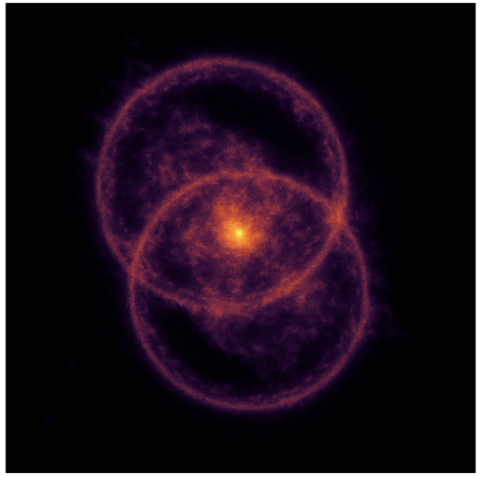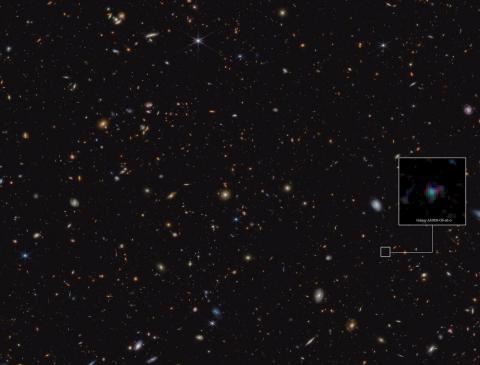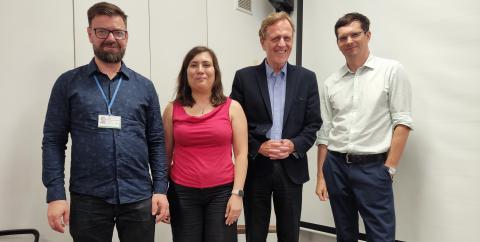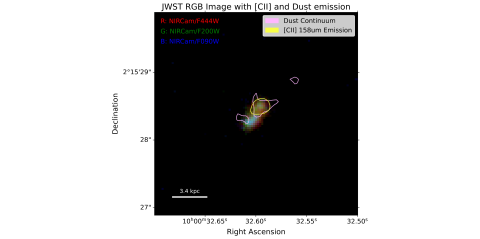
NCBJ joins the European astroparticle physics initiative EuCAPT
A group of researchers from the National Centre for Nuclear Research, in cooperation with scientists from institutes of the Polish Academy of Sciences, has joined the European scientific initiative EuCAPT. The NCBJ is among the first Polish centres to join this international collaboration.

Discovery of the Most Powerful Odd Radio Circle to Date
Astronomers have discovered the most distant and most powerful “odd radio circle” (ORC) ever observed – with key contributions from a researcher at the Astrophysics division of the National Centre for Nuclear Research (NCBJ).

NCBJ scientists investigate the origin of carbon dust in one of the oldest known galaxies
A team of researchers from the Astrophysics Division of the National Centre for Nuclear Research (NCBJ), led by dr hab. Ambra Nanni, has conducted a pioneering study of the origin of carbon dust in one of the most distant galaxies known to science – JADES–GS-z6-0. Data collected by the James Webb Space Telescope (JWST) has provided new insights into the presence of complex molecules, such as polycyclic aromatic hydrocarbons (PAHs), in the early Universe, less than a billion years after the Big Bang.

NCBJ scientists awarded for achievements in fundamental research
During the Special Seminar of the NCBJ's Department of Fundamental Research, the awards of the Department's Director for the greatest scientific achievements of the past year were awarded in accordance with tradition. This time, awards were given for research into the role of dust in the evolution of galaxies, reflections on classical and quantum gravity, and work on symmetry violation in the decay of beauty mesons. The event took place on 30 June.

Katarzyna Małek, Head of the Astrophysics Division was awarded the title of Professor
Katarzyna Małek, Head of the Astrophysics Division of the National Centre for Nuclear Research, was awarded the title of Professor of Natural Sciences in the discipline of astronomy in March 2025. Our sincere congratulations!

ALMA observations unveils the chemical composition of galaxies in the early Universe
New research indicates that early galaxies contain large amounts of gas and dust, essential for star formation, more than theoretical models would indicate. In a recently published paper, a team of scientists from the NCBJ Astrophysics Division used observations from the ALPINE-ALMA program to investigate the presence of gas and dust in galaxies that formed within the first billion years after the Big Bang.




